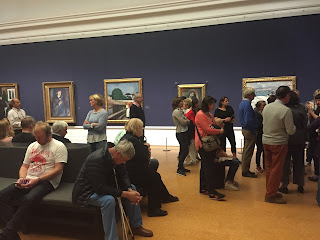A Joan Busquets lecture
 | ||||
| Busquets (left) and Hans Harms. |
Along the way, he made some interesting observations. He noted that the Shanghai metropolis and the Netherlands are both developing 80 new towns. (This was part of a discussion of decentralization.) He noted that Toledo has an urban pattern typical of traditional Arab cities, with the blocks subdivided into plots less than 20 square meters each, which leads to three-to-four-story buildings. Discussing a project for Toulouse, he noted how the computer's ability to layer makes possible a quantum leap in the richness of plans, since every component (trees, for example) can be considered in detail by specialists, and then integrated with the whole. He said, in reference to putting a train line that serves and passes through the center of Delft in a below-grade tunnel, how much planning owes to and learns from engineers.
 |
| An aerial view of Barcelona. |
Cities are complex, Busquets noted, but we finally have the tools to contend with their complexity. If plans were simpler in the past, this reflected the real limits of the planners' understanding - their analytical tools were inadequate. Some bemoan the loss of this simplicity, but in fact we should be grateful to find ourselves with "fantastic tools" that can assist our analyses and our designs.


Comments
Post a Comment